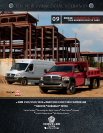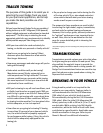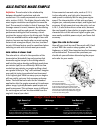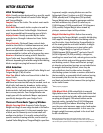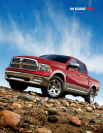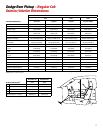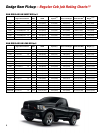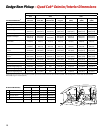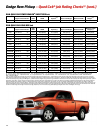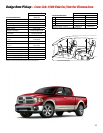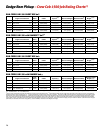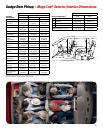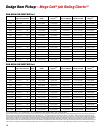2
The purpose of this guide is to assist you in
selecting the exact Dodge Truck you need
for your particular application, and to help
you make the best possible use of its
capabilities.
Did you know that most Dodge Trucks are capable of
towing trailers up to 907 kilograms (2000 pounds)
without added equipment or alterations to standard
equipment?
(1)
The first step in selecting the most
appropriate vehicle for your requirements is to identify
all the possible ways you’ll be using your truck:
• Will your tow vehicle be used exclusively for
towing, or double as a personal or family vehicle?
• How far are you going to be towing? (Short
distances place less demand on a tow vehicle
than longer distances.)
• How many passengers and what cargo will you be
taking while towing?
• Under what conditions will you be towing?
Mountainous areas? Under extremely hot or
cold temperatures? At high altitudes? The more
extreme conditions you encounter while towing,
the more important it is that your tow vehicle be
optimized to those conditions.
• Will you be towing in any off-road conditions, such
as elds, boat launches or gravel roads? Will you
park the rig in grass or on soft dirt? Heavy trailers
are difcult to get moving with a rear-wheel-drive
vehicle under some of these conditions. Will you
be towing in winter weather? Is a two-wheel-drive
vehicle adequate, or is a 4x4 required?
• How often are you going to be towing? If towing
is more than 20 percent of your planned vehicle
use, the vehicle should be properly equipped
for performance while towing; if less, the vehicle
should still be adequately equipped for the
towing job.
• Do you plan to change your trailer during the life
of the tow vehicle? If so, plan ahead and select
a tow vehicle that will meet your future towing
needs as well as your current ones.
The answers to these questions are most helpful
in selecting the right model, engine, transmission,
and axle ratio for optimal towing performance.
However, this is only a guide; personal preference
for “optimal” performance is an important factor
as well. Also, refer to the worksheet on the last
page for a more detailed guide in choosing the
correct vehicle.
(1)
Any trailer weighing more than 454 kilograms (1000 pounds) must have its
own brakes.
TRANSMISSIONS
Transmissions provide various gear ratios that allow
for higher engine rpm relative to road speed. They
also multiply the engine’s torque to provide the
pulling power needed to reach cruising speeds. All
Dodge Truck transmissions feature an overdrive top
gear that reduces engine speed when cruising, for
improved fuel economy.
BREAKING IN YOUR VEHICLE
A long break-in period is not required for the
engine in your new vehicle. Towing a trailer is
not recommended for the first 500 kilometres
(300 miles) of your vehicle’s break-in period.
Drive moderately during the first 500 kilometres
(300 miles). After the initial 100 kilometres (60
miles), speeds up to 80 or 90 km/h (50 or 55 mph)
are desirable. While cruising, brief full-throttle
acceleration, within the limits of local traffic laws,
contributes to a good break-in. Avoid wide open
throttle acceleration in low gear. Refer to your
Owner’s Manual for additional information.
TRAILER TOWING



